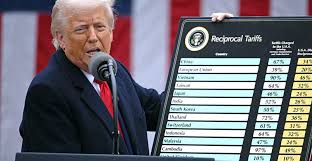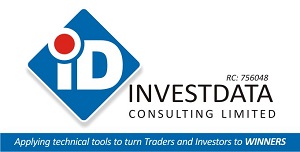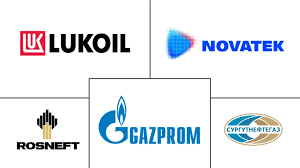Global Investors Forced Back On High Alert, As Trump Revives Tariff Threat

The White House has reloaded one of the most disruptive economic weapons of recent years, with President Donald Trump confirming plans to impose new unilateral tariff rates within the next fortnight.
In response, markets adjusted swiftly, with equity futures dropped, the dollar weakened, and demand surged amid flight to safe haven assets including gold and US Treasuries.
Risk is back in charge, Nigel Green, Chief Executive Officer of deVere Group, one of the world’s largest independent financial advisory and asset management organizations.
This, he said, “is a stark reminder that geopolitics—not earnings, not data—can still set the tone for capital markets. We’re seeing trade policy used again as a blunt-force economic instrument. That has consequences for every asset class.”
The announcement came just as investors were positioning around signs of improved US-China dialogue, a window of optimism that has slammed shut, as the US appears ready to act unilaterally and without warning, reviving the kind of tariff volatility that previously roiled global supply chains and distorted capital flows.
“The timing is deliberate,” says Green.
For him, “this isn’t negotiation—it’s escalation. And it forces institutional capital to reprice geopolitical risk across the board.”
Markets responded quickly. Technology, industrials and autos sold off. The dollar retreated. Gold and Treasuries caught strong inflows. The moves were broad, and calculated.
This wasn’t a delayed reaction. The capital rotation had already begun as the direction of policy became clearer.
“Investors are moving fast and with intent,” says Green. “Now it’s about reinforcing positions, not chasing headlines. Exposure needs to be calibrated to a live policy environment, not a stable one.”
The implications go far beyond trade. This shift reintroduces unpredictability into US economic policy at a moment when global confidence was just beginning to stabilise. The concern is not only the tariffs themselves—but the message they send about how the world’s largest economy intends to engage with its peers.
Central banks, he says, now face additional complexity. The rate-cutting cycle may clash with supply-side inflation created by tariffs, particularly in commodities, freight, and intermediate goods.
“There’s no clean policy response to politically driven inflation,” Green explains. “That’s why this move carries disproportionate weight. It doesn’t just affect prices—it erodes clarity.”
The knock-on effects will be global. Export-heavy markets in Asia and Europe are vulnerable. Emerging markets may see pressure from weaker currencies and shifting capital flows. Corporate forecasts will need to be revised. Supply chains will reprice. And volatility will be repriced higher.
“This kind of policy shift is highly corrosive to investment planning,” says Green. “It pushes companies into defensive mode and drags on global productivity. That shows up in both earnings and asset prices.”
deVere advised clients to remain fully invested but sharply focused. Defensive equities, gold, cash-flow-rich multinationals and low-leverage sovereign debt are likely to outperform in an environment where economic fundamentals are once again competing with policy shocks.
“Portfolios are already moving in this direction. The task now is precision—locking in protective positioning while identifying where mispricing may offer strategic entry points,” Green says.
The tariff threat also signals a broader geopolitical posture—one that may invite retaliation from China or the EU and disrupt the fragile consensus emerging across global trade forums. Investors are now forced to account for political risk on a wider scale.
“Volatility is no longer episodic. It’s policy-driven. And that makes it more unpredictable and more expensive,” Green adds. “To stay exposed without adapting is to accept unnecessary risk. But dislocation always brings opportunity for those prepared to act.”
Markets are already adjusting. The next major moves won’t wait for the formal announcement.
Already, Green stressed, “there’s no neutral position anymore. You’re either positioned for disruption—or exposed to it.”






